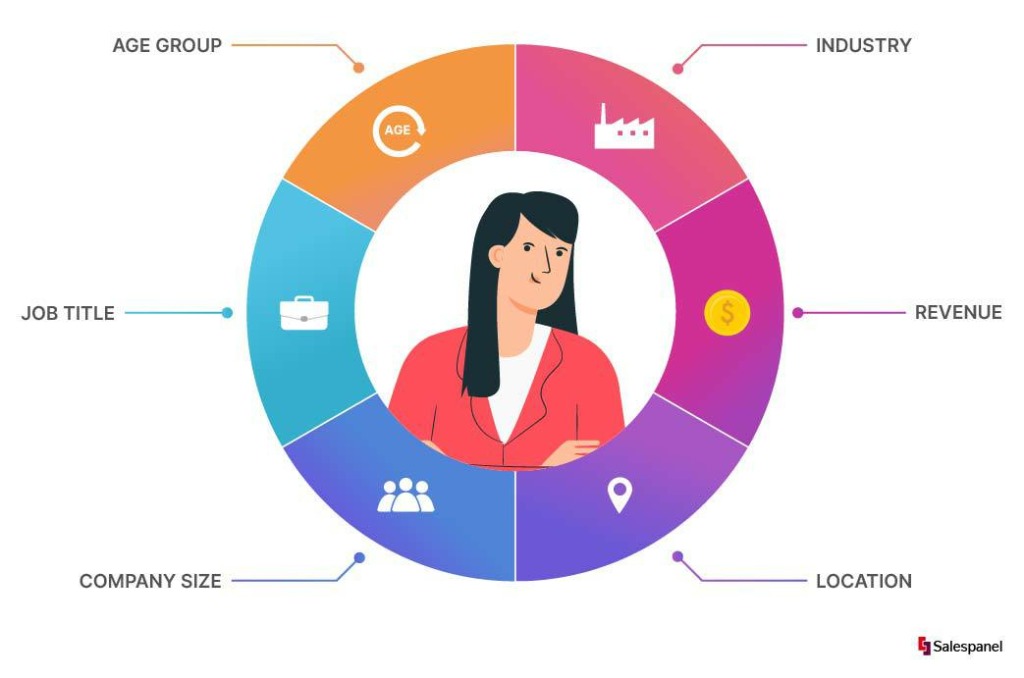Do you ever feel like you’re throwing spaghetti at the wall when it comes to outbound prospecting? You make dozens of calls and send countless emails, but struggle to connect with the right people. That’s because you haven’t defined your ideal client.
Defining your ideal client is crucial for successful outbound prospecting. It allows you to focus your efforts on those who are most likely to become customers, instead of wasting time and resources on uninterested parties. But simply knowing basic demographics like age or job title isn’t enough. To truly understand your ideal client, you need to create a detailed profile that includes their pain points, goals, and buying behaviors. In this article, we’ll show you how to create an ideal client profile and use it to inform your prospecting strategy for better results.
Key Takeaways
- Defining ideal client is crucial for successful outbound prospecting, as it helps target the right people and allocate resources efficiently.
- Understanding the ideal client involves identifying pain points, needs, and goals, and tailoring solutions to address them.
- Developing detailed buyer personas based on gathered information is important, and empathy is key when creating them.
- Continuous refinement of the ideal client profile through regular research, engaging with clients and prospects, and analyzing industry trends and customer feedback is essential for long-term success.
Importance of Defining Your Ideal Client
Defining your ideal client is crucial for effective outbound prospecting because it helps you target the right people and avoid wasting time on unqualified leads. By understanding who your ideal client is, you can tailor your messaging to resonate with their pain points and needs. This will increase the likelihood of connecting with them and ultimately converting them into a customer.
Defining Your Ideal Client: Benefits and Challenges
The benefits of defining your ideal client go beyond just saving time. It also allows you to allocate resources more efficiently by focusing on high-value prospects that are more likely to convert. However, there are challenges involved in this process as well. For example, it can be difficult to identify the key characteristics that make up an ideal client, especially if you’re targeting a new market or industry.
How to Gather Insights for Defining Your Ideal Client
To overcome these challenges, start by looking at your existing customer base. Analyze their demographics, psychographics, behavior patterns, and pain points. Use this information to create buyer personas that represent your ideal customers. You can also conduct surveys or interviews with potential customers to gather additional insights about their needs and preferences.
However, keep in mind that demographics aren’t enough when defining your ideal client. While factors like age, gender, income level may provide some insight into who they are as a person, they don’t tell the whole story about what motivates their buying decisions. It’s important to dig deeper into their behavior patterns and understand why they make certain choices over others. This will give you a better understanding of how to position yourself in a way that resonates with them specifically rather than relying on broad demographic assumptions alone.

Demographics Aren’t Enough
When it comes to defining your ideal client for outbound prospecting, demographics alone won’t cut it. To truly connect with your prospects, you need to understand their pain points, needs, and goals. By focusing on these key factors, you can tailor your messaging and approach to resonate with them on a deeper level and increase your chances of success.
Understanding Pain Points
By pinpointing the pain points of your potential clients, you can tailor your outreach efforts to offer solutions that they desperately need. Identifying triggers and addressing objections is a crucial step in understanding pain points. Triggers are specific events or situations that cause a problem for your potential client, while objections are concerns or doubts that prevent them from taking action. Effective communication and building rapport with clients are key to understanding their pain points.
To identify triggers, consider questions like: What problems do your clients face daily? What issues keep them up at night? By answering these questions, you will be able to anticipate and address their concerns before they even arise. To address objections, listen carefully to what the client has to say and respond respectfully. Show empathy and put yourself in their shoes. This will help build trust between you and the client and make it easier for them to open up about their pain points.
Understanding needs goes beyond just demographics – it requires delving into the deeper motivations of potential clients.
Understanding Needs
Understanding the needs of your potential clients is crucial for creating a successful business strategy. Effective communication is key in identifying what those needs are. When reaching out to prospects, it’s important to ask questions and actively listen to their responses. This will help you tailor solutions that meet their specific requirements.
Tailoring solutions involves more than just listening to pain points. You need to understand how your product or service can solve those problems and meet the unique needs of each prospect. By doing so, you can position yourself as a valuable partner who can provide real solutions rather than just selling products or services. Understanding needs goes beyond identifying pain points; it requires taking a comprehensive approach that puts the customer’s interests first.
As you move into understanding goals, keep in mind that this process builds on understanding pain points and needs. By really taking the time to understand what drives your prospective clients, you’ll be better equipped to present solutions that will resonate with them on a deeper level. Start by asking questions about their objectives and priorities, and use this information as a foundation for developing proposals that address both short-term challenges and long-term goals.
Understanding Goals
To truly connect with potential clients, it’s essential to grasp their goals and priorities – otherwise, your solutions may not align with what they’re looking for. Setting goals is a crucial step in this process. Understanding what your ideal client wants to achieve will help you tailor your pitch and present solutions that are relevant to them.
Once you’ve identified their objectives, the next step is finding solutions that can address their pain points. Your ideal client may have specific needs that require a unique approach or product offering. By understanding their goals and challenges, you’ll be able to offer tailored recommendations that resonate with them. With this knowledge, you can create a detailed ideal client profile that will guide your outbound prospecting efforts towards more meaningful engagements.

Create a Detailed Ideal Client Profile
To effectively target your outbound prospecting efforts, you need to create a detailed ideal client profile. The first step is to research your current customers and identify common characteristics such as industry, company size, and pain points. From there, develop buyer personas that outline the specific needs and behaviors of your ideal clients to refine your approach and increase conversion rates.
Research Your Current Customers
By analyzing the characteristics and behaviors of your current customers, you can gain valuable insights into who your ideal client may be and how to effectively target them in outbound prospecting. Here are 4 steps to help you research your current customers:
- Identify common characteristics: Look for patterns in demographics such as age, gender, location, income level, industry, company size, etc. This will give you a better understanding of who your most valuable customers are.
- Analyze behavior: What motivates your customers? How do they make purchasing decisions? What problems or pain points do they have that your product or service can solve? Understanding their behavior will help you tailor your messaging and approach.
- Collect feedback: Reach out to your existing customers for feedback on what they like about working with you and what could be improved. This information can inform how you position yourself in the market.
- Use data analytics tools: Utilize tools like Google Analytics or CRM software to track customer behavior on your website or interactions with your sales team. This information can help identify trends and inform future outreach strategies.
By identifying common characteristics among your current clients through this research process, you’ll have a clearer picture of who to target in outbound prospecting efforts moving forward.
Identify Common Characteristics
Spotting patterns in demographics is like finding a needle in a haystack, but it’s worth it to identify common characteristics among your current customers. By analyzing data such as age range, location, job title and industry, you can start to paint a picture of who your ideal client might be. Look for trends in behavior as well – what motivates them to purchase from you? What are their pain points? Identifying these characteristics will help you narrow down your outbound prospecting efforts and target the right people with the right message.
One common mistake when identifying common characteristics is assuming that all clients are the same. Even if they have similar jobs or live in the same area, each customer is an individual with unique needs and motivations. Effective techniques include using surveys or questionnaires to gather data on your customers’ preferences and interests. You can also use social media analytics tools to gain insights into their online behavior and interaction with your brand. By taking this approach, you’ll be able to develop buyer personas that accurately represent your ideal client base and create targeted marketing campaigns that resonate with them.
Transition: Now that you’ve identified some common characteristics among your current customers, it’s time to take things further by developing buyer personas based on this information.
Develop Buyer Personas
Now it’s time to really connect with your customers by creating buyer personas that resonate on a personal level. Creating empathy is key when developing these profiles, as it allows you to understand your ideal client’s needs, wants, and pain points. To do this effectively, start by gathering data through surveys, interviews, or analyzing customer behavior. This will help you identify patterns and commonalities among your target audience.
Once you’ve collected enough information, use it to create detailed buyer personas that go beyond demographics. Think about their motivations, challenges, goals, and values. What are their biggest concerns? How do they prefer to communicate? What influences their decision-making process? By answering these questions and more, you’ll be able to develop a better understanding of your ideal clients and tailor your outbound prospecting efforts accordingly.
Use your ideal client profile to inform your prospecting strategy by focusing on channels that resonate most with them. Whether it’s email marketing or social media outreach, make sure every touchpoint speaks directly to their needs and interests. This will increase the likelihood of converting leads into sales and building long-term relationships with loyal customers.
Use Your Ideal Client Profile to Inform Your Prospecting Strategy
When using your ideal client profile to inform your prospecting strategy, it’s important to customize your messaging to resonate with your target audience. By doing so, you increase the likelihood of catching their attention and initiating a conversation. Additionally, identifying the right channels for reaching out to potential clients can make all the difference in terms of response rates. Lastly, refining your targeting by adjusting parameters like industry or job title can further improve the effectiveness of your outreach efforts.
Customize Your Messaging
To effectively reach out to potential clients, it’s crucial to tailor your messaging and use language that resonates with their specific needs and interests. Personalization strategies are key when crafting effective messages because they allow you to speak directly to the pain points of your ideal client. By doing so, you increase the chances that they will engage with your message and take action.
Before reaching out, take some time to research your ideal client’s industry, company size, job title, and any other relevant information that can inform your messaging. Use this information to craft a message that speaks directly to their challenges or goals. Remember, personalization is not just about using their name in the email; it’s about showing them that you understand their unique situation and have something valuable to offer. With a customized message in hand, you’ll be better equipped to connect with potential clients and move them closer towards becoming a customer. As you develop these personalized messages for outreach campaigns, keep in mind the importance of identifying the right channels for delivery so that you can maximize engagement from prospects who are most likely interested in what your business has to offer.
Identify the Right Channels
You can maximize your outreach efforts by identifying the right channels to reach your potential clients. But how do you know which channels will be most effective for your business? Here are four key factors to consider when selecting channels for a cross-channel approach:
- Demographics: Consider the age, gender, location and other demographic factors of your target audience when choosing channels. For example, if you’re targeting millennials, social media platforms like Instagram or Snapchat may be more effective than email marketing.
- Personalization: Personalized messages that cater to an individual’s unique preferences and interests are much more likely to elicit a response. Consider using direct mail or LinkedIn InMail as they allow for tailored messaging.
- Industry-specific Channels: Certain industries have specific communication channels that are more popular or relevant than others. For example, if you’re targeting healthcare professionals, conferences and trade publications may be more effective than social media or email marketing.
- Measuring Success: It’s essential to track metrics over time to measure the success of each channel in reaching your target audience effectively.
By identifying the right mix of channels based on these criteria, you can increase engagement rates and ultimately see greater results from your outbound prospecting efforts. Now it’s time to refine your targeting further by leveraging this information with data analysis and research into what motivates them towards action.
Refine Your Targeting
Let’s fine-tune our focus by delving deeper into the preferences and motivations of our target audience, using data analysis and research to inform our approach. Targeting strategies are crucial in outbound prospecting as they help you identify the right people to reach out to. To refine your targeting, start by defining your ideal client criteria. This includes factors such as industry, company size, job title, location, and pain points that your product or service can solve.
Once you have a clear understanding of your ideal client criteria, use data analysis and research to identify companies and individuals who fit this profile. Look at their online behavior, social media activity, and engagement with similar products or services. By doing so, you can create a targeted list of prospects who are more likely to be interested in what you have to offer. Continuously refining your ideal client profile is essential for successful outbound prospecting as it helps you stay relevant and effective in reaching out to potential customers without wasting time on unqualified leads.
Continuously Refine Your Ideal Client Profile
As you refine your ideal client profile, continuous improvement is key to staying relevant in the market. You need to constantly update your understanding of your target clients’ needs and preferences. But how can you do this? One way is to conduct regular research on industry trends, competitor activities, and customer feedback. This will help you identify new opportunities for growth and adjust your sales strategies accordingly.
Another approach is to engage with your existing clients and prospects through various channels such as social media, email marketing or surveys. This will give you valuable insights into their pain points, buying behaviors and decision-making processes. By analyzing this data, you can fine-tune your ideal client profile and tailor your messaging to resonate with their specific needs.
Finally, it’s important to remember that refining your ideal client profile is an ongoing process that requires a combination of analytical skills, creativity and adaptability. Don’t be afraid to experiment with different approaches or pivot when necessary. The key is to stay agile and responsive in a rapidly changing business environment. By continuously refining your ideal client profile, you’ll be able to build stronger relationships with customers who are more likely to become repeat buyers or advocates for your brand – leading to long-term success for both you and them!
Conclusion
Congratulations! You have successfully defined your ideal client for outbound prospecting. By taking the time to create a detailed profile of your perfect customer, you have set yourself up for success in finding and targeting the right prospects.
Remember, demographics alone aren’t enough. Your ideal client goes beyond just age or income; it includes their values, pain points, and goals. By understanding these factors, you can tailor your messaging and approach to resonate with them on a deeper level.
Now that you have your ideal client profile, use it to inform your prospecting strategy. Focus on channels and tactics that align with where they spend their time and what they care about most. And don’t forget to continuously refine your profile as you gather more data from your interactions with customers.
By defining and targeting your ideal clients, you’ll not only increase the chances of closing deals but also build stronger relationships with those who truly value what you have to offer. So go forth and conquer – the possibilities are endless!

